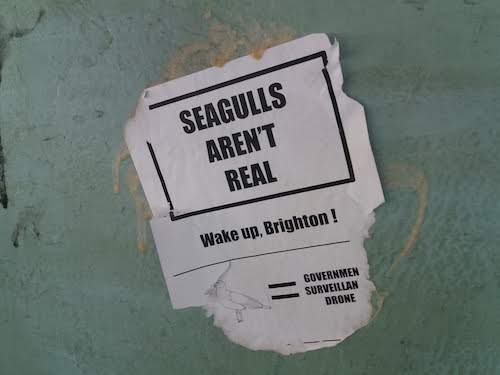
Back in February 2020, walking to Hove station for my commuter train, a bird dropped a bone on my head. The image feels almost too rich with symbolism, given what was coming. And, of course, this bird of ill-omen was a seagull.
Brighton belongs to the seagulls. Whenever rubbish goes uncollected, they scatter litter on the streets. They trash the town like the worst stag night tourists. They scream and shout, waking people in the mornings. Netting doesn’t keep them out. They’ll attack people for chips, making it dangerous to eat in the open.
(There is a shop at the end of my road, which has fruit and veg in stands outside. I’ve always wondered how it copes with the local seagulls. So, I asked the shopkeeper one Sunday. Apparently, the seagulls are no trouble in the winter, but in the summer they can be. Strawberries, blueberries and raspberries are among their favourites, but more than anything else they love peaches.)
Brighton’s seagulls are vicious. I’ve had them stalk me down the street to have a go at stealing a baguette. Another landed at a table to grab the sandwich from a plate waiting opposite. They’re vicious thieving bastards.
They seem to know they cannot legally be killed. Some of them must suppose they are a holy thing, a beloved and adored bird. They will assume that we build houses as places where they can perch and nest, that we serve them our rubbish. We like to pretend that Brighton is a human town, but really it belongs to the seagulls.
They are the Bullingdon Birds, like little Tories, causing noise and mess, not caring for the smaller birds. They’d steal the food from hungry school children in a minute. I’ve seen them cruelly tear apart pigeons. Brighton is their city.